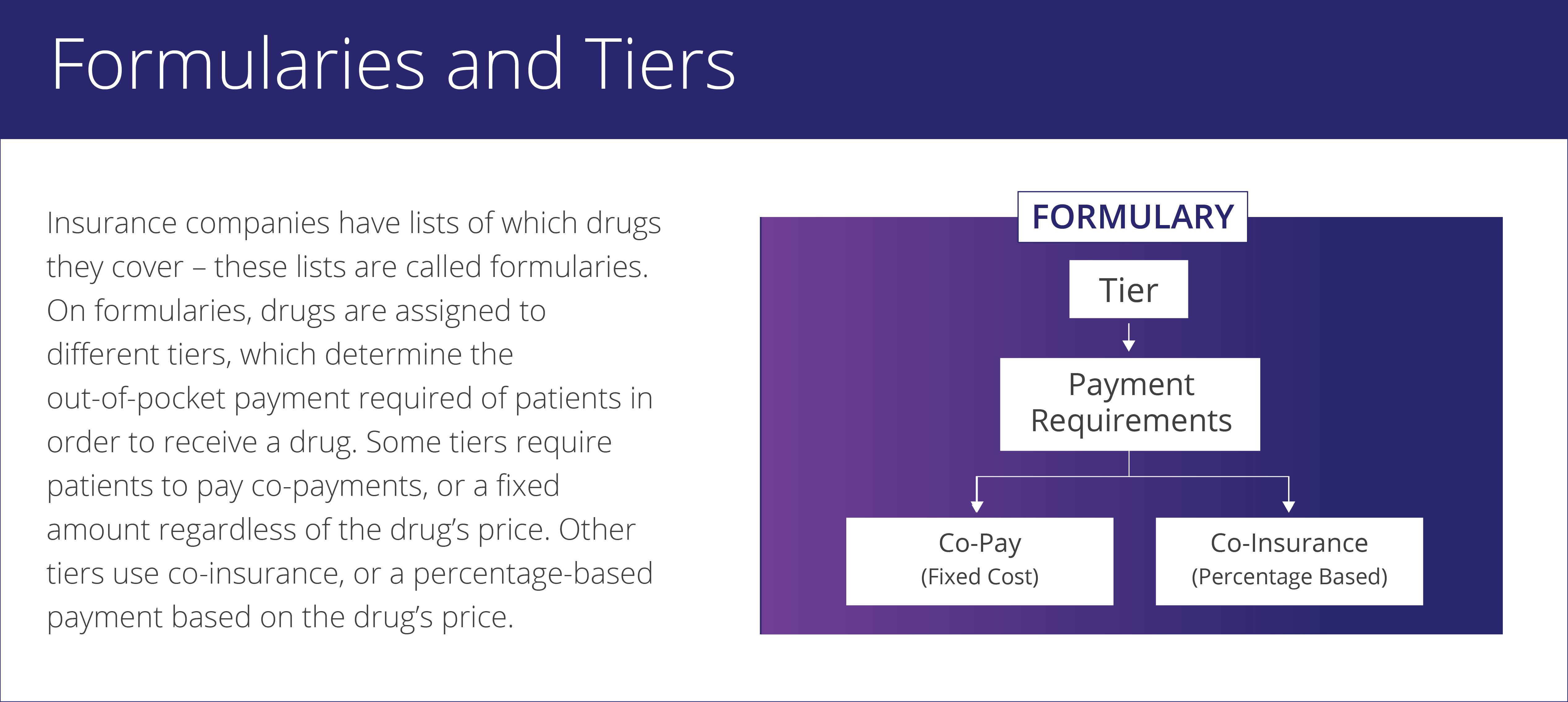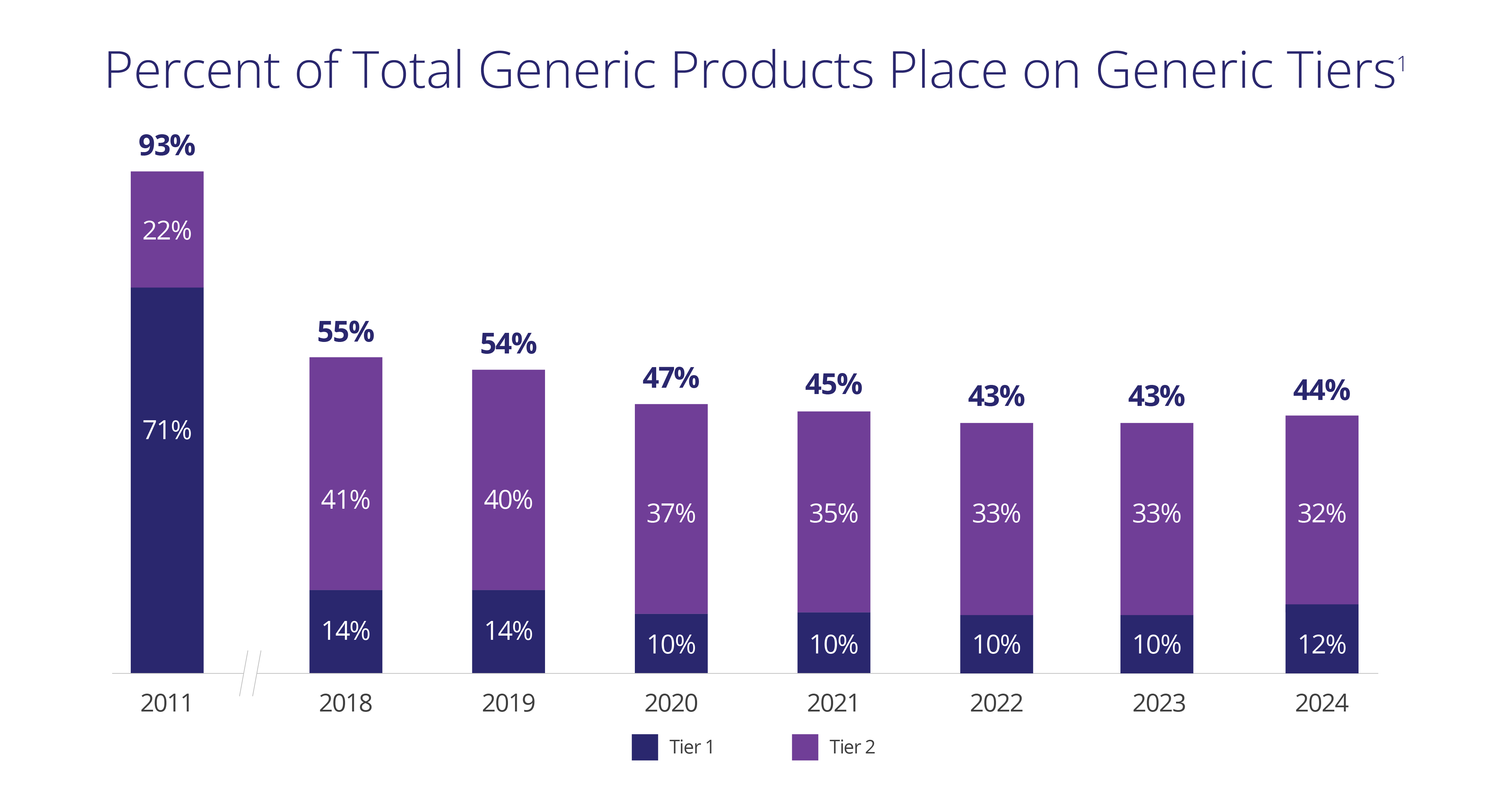Insurance companies have lists of which drugs they cover – these lists are called formularies. On formularies, drugs are assigned different tiers, which determine the out-of-pocket payment required of patients in order to recieve a drug. Some tiers require patients to pay co-payments, or a fixed amount regardless of the drug’s price. Other tiers use co-insurance, or a percentage-based payment based on the drug’s price.

Off-patent competition from generic and biosimilar medicines saves Americans billions of dollars each year. However, patient access to generics and biosimilars is often limited or even completely blocked by the way that health insurance plans and Pharmacy Benefit Managers (PBMs) design their prescription drug benefits.








